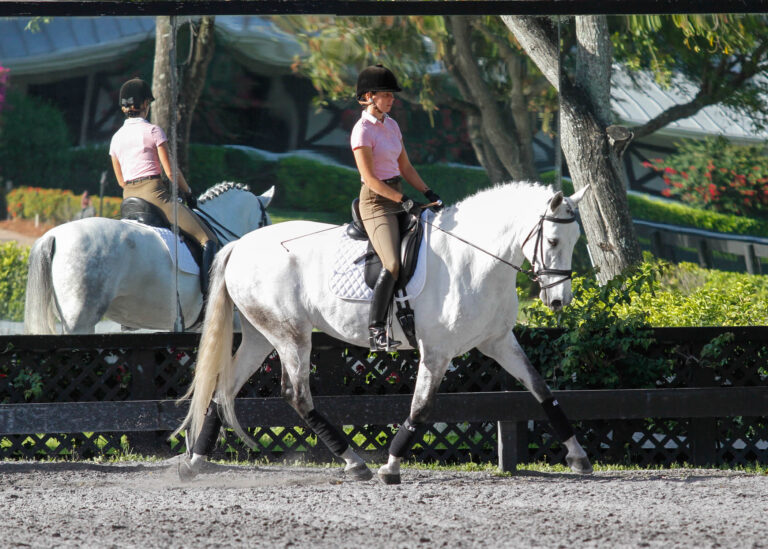In a dressage trot lengthening, the horse pushes himself from behind and through his whole body into longer, suspended strides. He covers as much ground as he can in balance.

According to the U.S. Dressage Federation’s Glossary of Judging Terms, lengthening is defined as “Elongation of the stride and the outline of the horse, yet maintaining the same tempo [beats per minute] and balance as in the corresponding working pace.”
Here I’ll give you 10 tips to improve the lengthening:
1. The lengthening is a whole-bodied movement for your horse…that is, it must go from thrusting hind feet all the way to the bit.
2. Expect your horse to reach for the bridle in the lengthening. “Reach” is the operative word. Allow his whole body—not just his strides—to lengthen. Soften your hand so he feels he can reach, but don’t throw away the contact.
3. The lengthening should stabilize the contact without making it heavy or inflexible. Your horse should still be responsive to slight suppling aids to the left and right.
4. Lengthenings can only be developed from a correct working trot.
5. Be very picky and precise about your line of travel during the lengthening so that your horse’s effort goes “through” his body.
6. You should feel suspension in the lengthening.
7. Keep the same tempo in the lengthening, even if you don’t get the amount of reach that you want. If your horse gets fast, he has lost his balance onto the forehand. If it feels slightly slower, that’s a good sign because it takes longer to make a big stride than it does to take a small stride.
8. If your horse loses his balance in the lengthening, half halt and circle to get it back.
9. Incorporate suppling exercises with all lengthenings so your horse doesn’t get stiff and difficult in the downward transitions. For example, on the diagonal line, you can do a few steps of leg yield in the middle or toward the end of the lengthening. Be sure your horse’s shoulders stay on the exact diagonal line.
10. Don’t expect to get your best lengthening the first time you ask. Your horse’s efforts will improve with repetition. He’ll get “into it” when he feels the freedom you have given him.
For more about how to ride trot lengthenings, see “Trot Lengthening: The What, The Why and The How.”











